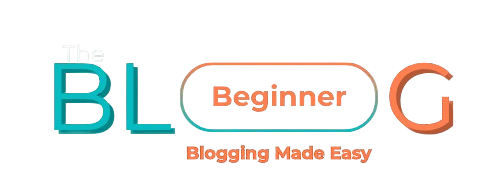On-Page SEO for Beginners: How to Optimize Your Blog Posts
Table of Contents
💡 What is On-Page SEO?
On-page SEO means optimizing everything inside your blog post or page to help search engines understand your content — and rank it higher.
It’s all about structure, clarity, and keyword placement.
Think of it as making your blog post Google-friendly and reader-friendly at the same time.
🧩 Why It Matters
When done right, on-page SEO helps you:
- Show up in search results
- Attract more targeted visitors
- Improve your content’s clarity
- Keep readers engaged longer
- Boost your authority and trust
✅ The Key Elements of On-Page SEO
1. 🔑 Use the Right Keywords
Choose 1 primary keyword for your post, and a few secondary or related keywords.
Use your main keyword in:
- Title (H1)
- Meta description
- First paragraph
- Subheadings
- URL
- Alt text of images
- Naturally within the content
Don’t overdo it — keep it natural and smooth.
2. 🏷️ Craft an SEO-Friendly Title & Meta Description
Your title and meta description show up in Google results. Make them clear, catchy, and keyword-rich.
- Title (H1): Under 60 characters, includes main keyword
- Meta description: 150–160 characters, compelling and informative
Use power words like “best”, “easy”, “ultimate”, or “guide”.
3. 🧱 Structure Your Content with Headings
Use headings to break your post into sections:
- H1 – Used once (your title)
- H2 – Main sections
- H3 – Subsections inside each H2
Clear structure helps both readers and search engines.
4. 🔗 Internal & External Links
- Internal links: Link to other relevant posts/pages on your blog
- External links: Link to trusted, relevant sources (like tools, studies, or helpful articles)
Tip: Open external links in a new tab.
5. 🖼️ Optimize Images
- Use descriptive file names (e.g.,
seo-checklist.png) - Add alt text with your keywords
- Compress and resize images for speed
- Prefer WebP format when possible
6. 🧭 Improve Readability
Make your content easy to scan and enjoy:
- Short paragraphs (2–3 lines)
- Bullet points & numbered lists
- Bold key phrases
- Use a friendly, human tone
Bonus: Add a Table of Contents for longer posts.
7. 🚀 Boost Performance & Speed
- Use caching (LiteSpeed Cache)
- Enable lazy loading for images
- Minimize unnecessary plugins
- Test your speed with Google PageSpeed Insights
Fast websites = better rankings.
🧪 On-Page SEO Checklist
✅ Main keyword in H1
✅ Keyword in first 100 words
✅ SEO title & meta description written
✅ Proper heading structure (H1, H2, H3)
✅ Internal and external links included
✅ Images optimized with alt text
✅ Mobile-friendly layout
✅ Fast loading time
✅ Clear call-to-action (CTA)
🔗 Internal Navigation
👉 Want backlinks? Learn about Off-Page SEO
👉 Confused by keywords? Go back to Keyword Research
👉 Just getting started? Start from SEO Basics
📝 Final Words
On-page SEO isn’t just about pleasing Google — it’s about helping real people understand, trust, and engage with your content.
With small tweaks, your blog can become a search engine favorite and a reader magnet 💙
